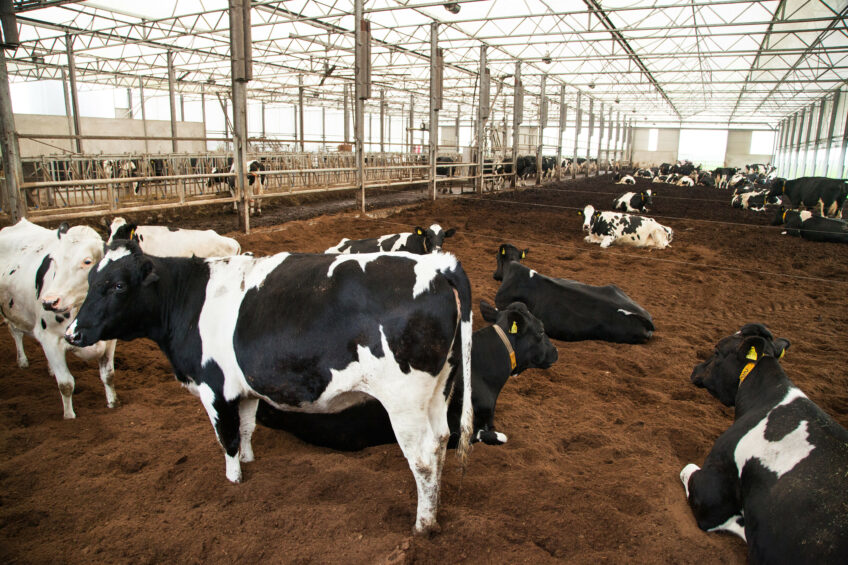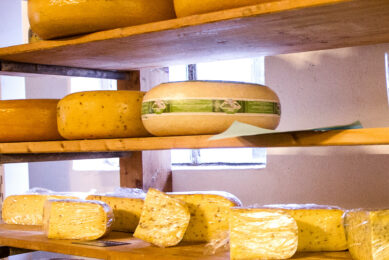Don’t forget the dry cows!

Optimising milk production for the whole production herd requires attention for all age groups of the cows. Special attention goes to calves. But we should definitely also pay more attention to the dry cows, as much can be gained in this group of animals.
This is according to William (Bill) Woodley, owner of Woodley Dairy Direction in Canada. Mr Woodley was an invited speaker at a seminar from Lallemand Animal Nutrition, held in Germany and Poland, with focus on large dairy farms and their challenges. There is more milk to gain (available) at most of the dairy farms by removing the critical bottlenecks from production. This can be achieved by improving management and nutrition throughout the dairy animal’s life cycle – from calf to cow.

The legacy effect
There is a legacy effect on most dairy farms, Mr Woodley explained. The term legacy effect is often used in soil science to explain that all the things we did in the past have an influence on what we see today. This is the same for a dairy farm. “The herd that you are milking today is the culmination of all the decisions that you have made in the past. If you haven’t managed and fed the dairy calf in the first 2 critical months of her life, the price will be paid when she grows out to be a heifer and lactating cow,” Mr Woodley said. For example, weight gain in the pre-weaning phase can have an impact on future milk production while larger heifers at breeding and calving could also lead to improved performance. Mr Woodley addressed that 3 major things have to work together and should be in balance to be able to improve milk production. These are:
- cow comfort
- nutrition
- feed access
If these 3 things are good and in balance with each other, then 90% of the problems are solved.
Cooling effect on dry cows
Special attention needs to go to the dry cows, Mr Woodley explained. He explained a University of Florida study that was done to see the effects of heat stress on dry cows. Heat stressed dry cows had a lower number of functional mammary secretory cells. A study done in 2009 showed that when the dry cows were cooled, it resulted in an average of 7.5kg more milk per cow per day. Cooled cows also produced more 3.5% fat corrected milk through 201 DIM.
Another study from 2011 showed that cooled dry cows averaged 5kg per day more milk and consistency produced more milk through 280 days in milk. When dry cows experience heat stress the consequences can be quite severe. For example, they will have a shorter gestation period (up to 7 days), compared to cows that were cooled. Heat stressed cows also have lower calf birth weights, and calves from heat stressed cows show lower serum IgG concentration and efficiency of absorption, But surprisingly the calves from heat-stressed dry cows produce 5kg less milk during their 1st lactation. “The bottom line is that calves from these heat stressed dry cows produce less milk later in life,” according to Mr Woodley.
Another topic within cow comfort is respecting the needs of dry cows with respect to housing. “In many dairy operations, all the cows are housed under the same roof, but the needs of the dry cows with respect to photoperiod are different than calves, heifers and lactating cows. In nature, cows are often pregnant in wintertime where days are short. In a farm situation, dry, pregnant cows also need darker and calm areas.” Studies showed that dry cows exposed to short day length had 3.2 litres more milk per day for the first 120 days in lactation.

Focus on dry matter intake
Woodley also paid attention to the diet of the dry cow and why it is so important to get the dry cow diet in line with the post-partum diet. “The dry cow diet is key and focus should on dry matter intake (DMI). It is important to maintain a healthy (controlled energy) and high DMI in the dry period. This way we can develop a seamless transition.” Mr Woodley addressed. According to him, the dry cow ration and the milking cow ration are quite different but should ‘look’ the same. In many dairy operations, the fibre length or particle size is much longer in a traditional dry cow program – but this can present problems related to dry matter intake and sorting. Mr Woodley: “Particle size is a key driver to improve transition. A dry cow diet is high fibre ‘on paper’ but should physically present like the lactating TMR. Reducing the particle size increases the passage rate, which in turn leads to a higher DMI, hence leading to an easier transition into lactation.” An ideal dry cow TMR can be made by reducing the particle size of the coarse ingredients such as hay and straw. Less than 50% should consist of fine particle size, over 45% of the TMR should include middle size particles and large fibres should be included no more than 10% of the total.
The dairy event also featured the speakers: Laurent Dussert, Luis Queirós, Aurélien Piron from Lallemand Animal Nutrition and Segev Segalchick from TAZE Dairy Farm in Turley.
Join 13,000+ subscribers
Subscribe to our newsletter to stay updated about all the need-to-know content in the dairy sector, two times a week.










